Get your FREE sensory profiles cheat sheet >>click here<<
What is a Sensory Seeker and How Can I Support Them?
*note: this post contains affiliate links
Two of the most popular questions I get asked are :What is a sensory seeker and, what can I do to help a sensory seeker? Keep reading to find out my answer.At the OT clinic, we had a client who was a classic sensory seeker.
She would spin and spin to her heart’s content, run at super fast speed (regardless of how many obstacles were in her way) and never sat still.
A new OT was spinning her in a swing while she squealed and laughed with what seemed like utter joy, yelling “MORE!” The OT assumed she wanted to go faster.
Turns out that her uncontrollable laughter and squealing wasn’t a sign of enjoyment. It was a subtle sign that she was dysregulated.
She immediately spewed out the cheese pizza and chocolate milk she had just had for lunch.
Lesson learned. Uncontrollable laughter and high pitched squealing does not always mean keep going. It might be a signal to stop.
Before diving in to the post, please remember: this is not to replace medical advice. If your child fits some of the criteria, it’s recommended that you bring your concerns to your pediatrician and ask for a referral to an Occupational Therapist.
What is a sensory seeker?
A sensory seeker or craver is a person who has a high threshold (or a large sensory cup) for sensory input. This means that in order for that person to register, acknowledge, recognize or notice that input, they require a lot more frequency, intensity or duration of the input than someone with a typical threshold.
These children are often perceived as “hyperactive” and often described as the energizer bunny. You know, the ones that seem to keep going and going, and you find yourself saying “how do they have that much energy?”
The truth is, it’s less about actual energy and more about the child’s brain (nervous system) not feeling “satiated” with a particular sensory input. Even though they may have been swinging for 25 minutes at full speed, they crave more.
Even though they have been rolling around in the mud outside, they aren’t aware of how messy they’re getting or how long it’s been.
They just want more.
A child can be a seeker of any of the following systems:
- Tactile
- Visual
- Auditory
- Smell
- Taste
- Vestibular
- Proprioception
But there’s an important piece to consider when trying to identify a “true” sensory seeker or craver. Most sensory seekers don’t become more regulated as they get more input. Rather, they often become more dysregulated, unless the input is provided in an organized, structured and goal-directed way.
Here’s an example. Let’s say you have a movement seeker. It’s Monday night at 4:45, you’re trying desperately to get dinner together and your tornado 10 year old is zipping around the kitchen. You tell them to “go get your energy out” in the backyard. With no clear plan.
They come back in 20 minutes later, sweating, out of breath, spinning and moving faster than before, perhaps talking fast, acting silly, using a high pitch voice, maybe still running or moving fast and not able to stop or hear you tell them to wash their hands.
That is a sign of a true sensory seeker.
They are insatiable, and will create any opportunity to obtain the sensory input their body craves, even if it disregards safety or social etiquette or norms.
How to support a sensory seeker
So, you know your child is a sensory seeker but I just told you that giving them more input can sometimes dysregulate them further.
Here are 3 tips to providing best support for sensory seekers:
Provide multiple opportunities throughout the day:
Find creative ways to incorporate their sensory input craving throughout their activities in the day. If there are no easy ways to incorporate it through transitions or within each activity, then provide scheduled breaks for them. Sensory diets are designed to be proactive- they aren’t as effective if you wait until they are dysregulated. Rather, you want to proactively feed your child’s nervous system with the input that they crave throughout the day. This will decrease the chances that they seek it out at inappropriate times or in inappropriate ways.
Note: what’s calm and regulating to one child may not be for another. In general, however, heavy work is a really good sensory input to focus on if you have a craver. Click here to learn more about heavy work.
Provide sensory activities that are goal directed:
Rather than saying “go run outside”, a movement seeker would benefit more from something like “Run as fast as you can to pick up 10 acorns and bring them back to me”.
Instead of “play with this sensory bin”, try hiding things in it and saying “can you find all the blue items?”
Find ways to make their sensory seeking activities have a clear goal and a purpose, like: collecting items, sorting items, creating an end product, being given instructions to follow, compete in a race or a time limit.
Provide sensory activities that have a clear start and stop:
As we’ve already established, sensory seekers could keep going and going and going. This makes for a dysregulated child and difficult transitions. It’s in everyone’s best interest to provide structure and a clear start and end time for sensory breaks and sensory activities.
Visual timers are one of my top recommendations for families and are perfect for showing the child how much time they have for a particular activity.
Using music is also a great marker for expected times of activities. Put on an entire album or playlist that lasts 30 minutes to an hour, or play 1 song for a quick break and say “when the song is done, we’re getting back to work.”
If you’re doing a sorting or collecting game, give them a number to complete or say “when you get to 10 acorns, come find me.”

Free: Who Needs Heavy Work?
I mentioned proprioceptive, heavy work in the episode, which is a really calming sensory input. It’s mostly regulating for everyone, but there are some kids who benefit from it more based on their behaviors and needs. This free guides helps you determine if your kid benefits from this particular sensory input.
Taking Steps Towards Self Regulation
No matter what kind of sensory diet you decide to provide for your child, the absolute number one tip I give to all parents, teachers and therapists is to narrate or sports cast your observations.
For example, let’s say Johnny is starting to become dysregulated. You might say “Hey Johnny, I notice your body is starting to move really fast. It looks like you are needing a movement break.”
You could also narrate and verbalize your observations after they do a sensory activity and say something like, “Wow I noticed your body is so calm and ready to focus for our book. It looks like your body really needed that ___insert sensory activity here__”
This will help build self awareness for your child, which will later contribute to their ability to independently choose an appropriate sensory regulation activity or tool for themselves. At the very least, I hope this spares you a few puke-y cleanups.
Resources that might be helpful for you
Star Center Parent Yearly Membership for education on Sensory Processing
Star Center Home Sensory Diet Activities example
No Longer a SECRET- Unique Common Sense Strategies for Children with Sensory or Motor Challenges
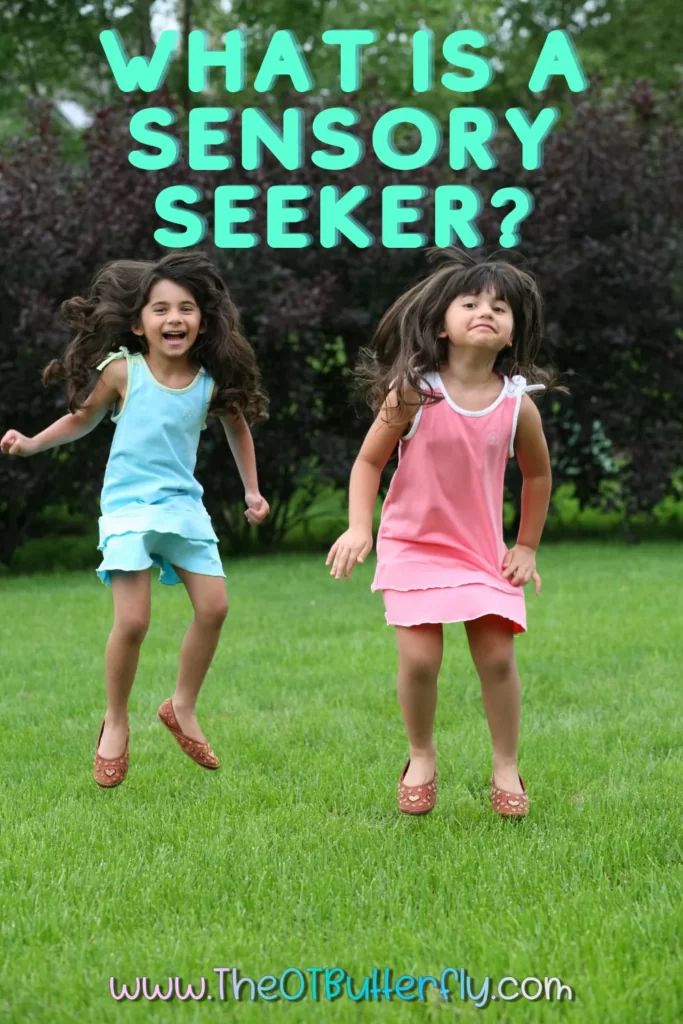


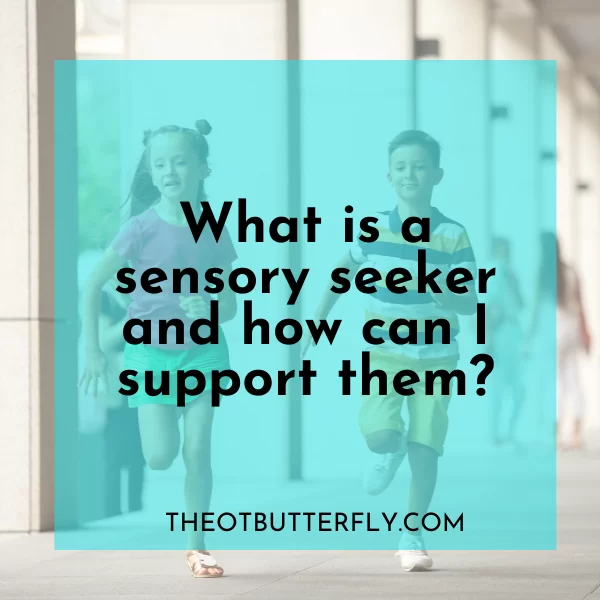
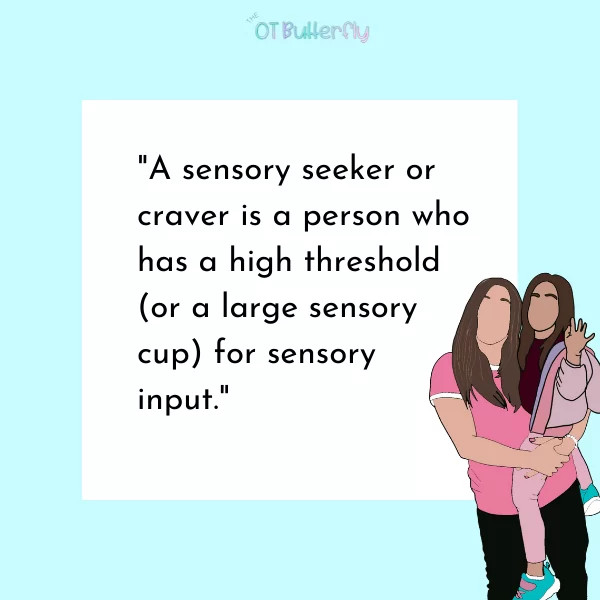

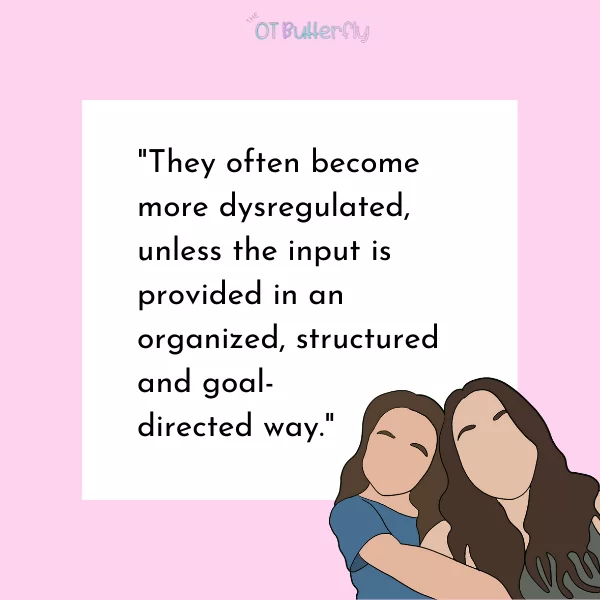
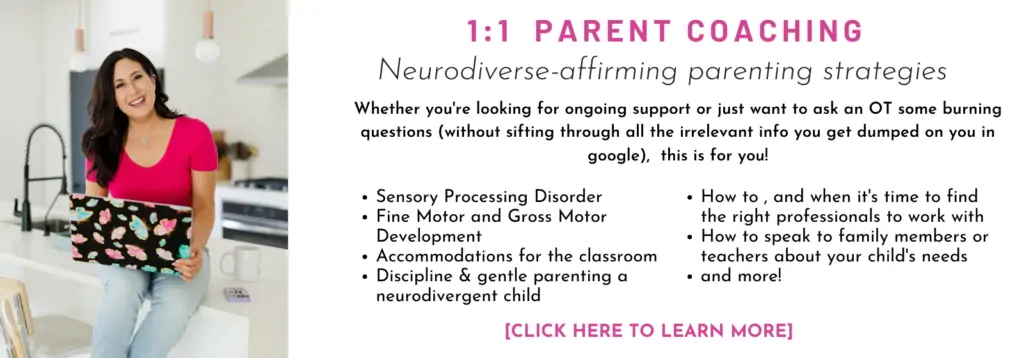



Hi,
Do you have any recommendations of parenting books about sensory seekers?
Hi! There’s a book called “The Out of Sync Child” by Carol Kranowitz who talks about all types of sensory profiles, seekers included!